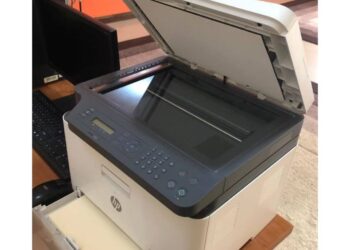Apple’s compact tracking device has become essential for many users who want to keep tabs on important items.
If you’ve purchased an AirTag or are considering getting one, you might wonder about its power longevity. After all, a tracker is only useful when it has enough energy to function properly.
In this guide, we’ll examine what powers these small trackers, how long you can expect the battery to last based on actual usage, what impacts battery duration, and how to monitor power levels.
We’ll also compare AirTag battery performance with other tracking options on the market and discuss potential alternatives for powering your device.
What Powers An Apple AirTag?
Apple AirTags run on a standard CR2032 lithium coin cell battery. This small, flat, circular battery provides the energy needed for all AirTag operations.
The CR2032 works through a simple electrochemical process. The “CR” indicates it’s a lithium-manganese dioxide battery, while “2032” refers to its dimensions – 20mm diameter and 3.2mm thickness. When connected in the AirTag circuit, the battery creates an electrical current as lithium atoms from the negative side move toward the positive manganese dioxide side.
Apple selected this battery type for several practical reasons. CR2032 batteries are widely available in stores worldwide, making replacement simple for users.
They offer a good balance of small size and adequate power capacity for a tracking device. The flat design allows Apple to maintain the AirTag’s compact form.
Additionally, these batteries have stable voltage output and perform reliably across various temperatures, important for a device that might be used outdoors or in different environments.
How AirTags Work and Their Power Requirements?
- AirTags use Bluetooth Low Energy (BLE) to communicate with nearby Apple devices.
- They transmit a secure Bluetooth signal that can be detected by compatible devices in the Find My network.
- When an AirTag is located, the coordinates are sent to iCloud, allowing owners to find their items through the Find My app.
- AirTags feature Ultra-Wideband technology for Precision Finding on compatible iPhones.
- The battery powers all these communication functions while maintaining a low energy profile.
Factors That Affect AirTag Battery Life
1. Frequency of Location Pings
- More frequent pings = faster battery drain
- Constantly moving items requires more location updates
- Static items (like stored luggage) use less power
2. Signal Strength and Bluetooth Usage
- Weak signals force AirTag to boost transmission power
- Areas with many Apple devices nearby reduce power needs
- The Precision Finding feature uses extra energy when activated
3. Environmental Conditions and Temperature
- Cold weather (below 32°F/0°C) reduces battery efficiency
- High heat (above 95°F/35°C) can degrade battery capacity
- Moisture or humidity may affect internal components
Find My Alerts and Sound Playing
- Playing the built-in speaker is power-intensive
- Frequent sound alerts significantly reduce battery life
- Each 15-second sound activation consumes notably more power than passive tracking
- Lost Mode with constant alerts will drain the battery much faster
How to Check Your AirTag’s Battery Status?
Step-by-Step Guide on iPhone
- Open the “Find My” app on your iPhone
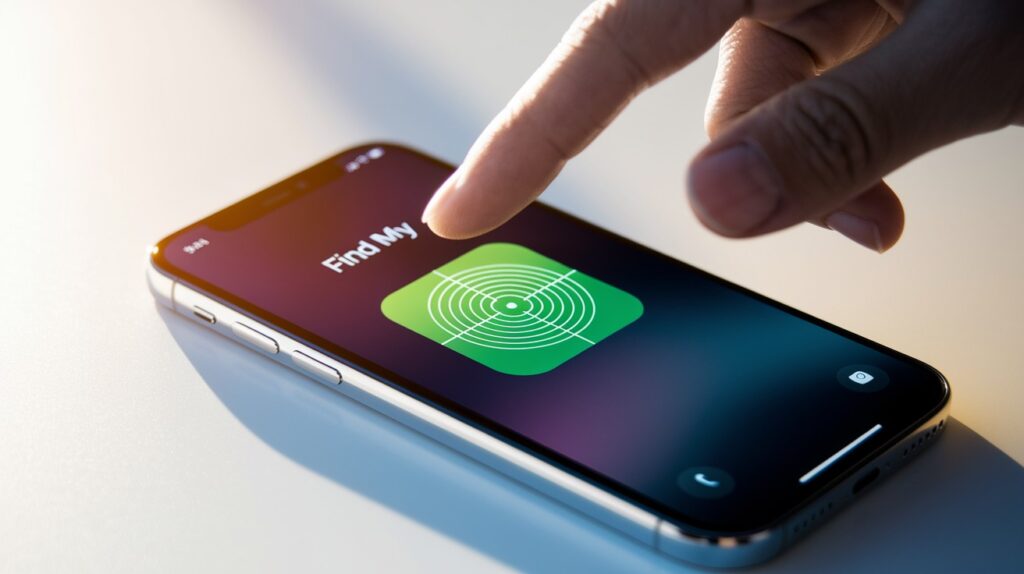
Locate the Find My app on your home screen or in the App Library. It has a green icon with a white radar-like circle. Tap to launch the application.
- Select the “Items” tab at the bottom of the screen

At the bottom of your screen, you’ll see several tabs. Look for the “Items” tab, which shows a luggage tag icon. This is where all your tracked items, including AirTags, appear.
- Find and tap on your AirTag from the list.
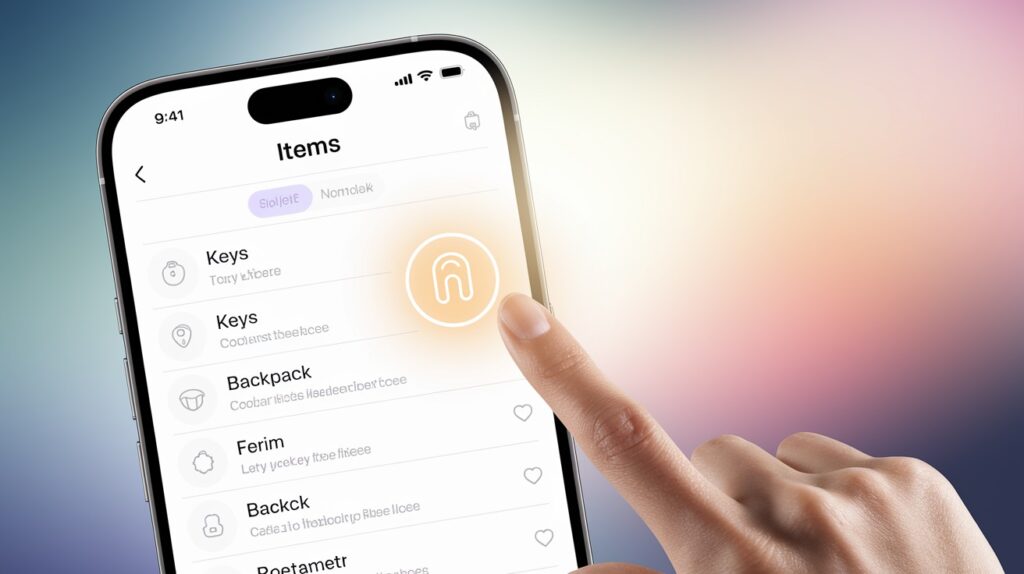
Your screen will display all items you’re tracking. Look for the specific AirTag you want to check by its custom name (like “Keys” or “Backpack”). Tap on it to select.
- View the battery indicator below the AirTag name.
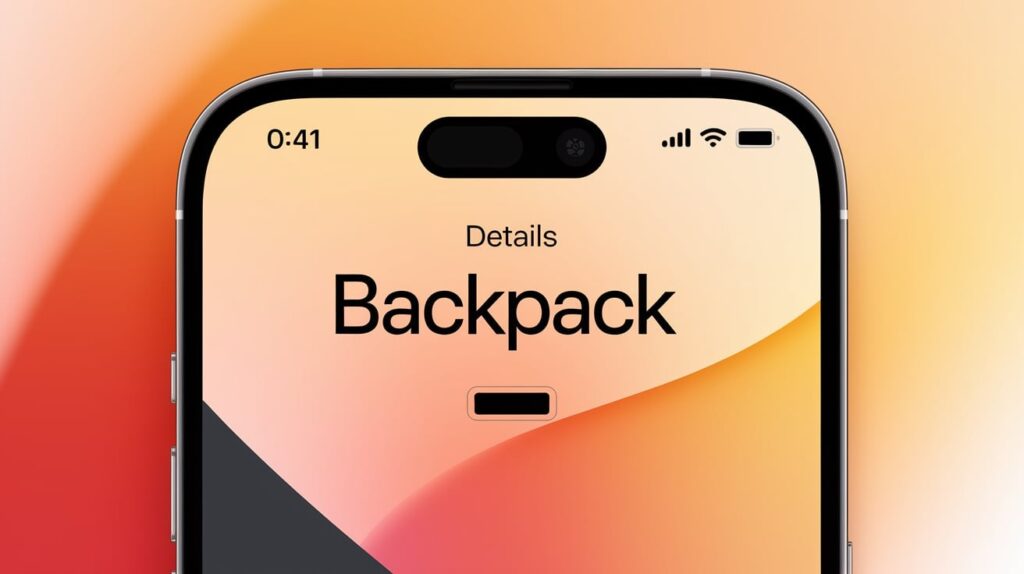
Once selected, the AirTag details screen appears. Look directly under the AirTag name, where you’ll see a small battery icon showing the approximate power level remaining.
- If the battery is low, you’ll see a “Low Battery” warning
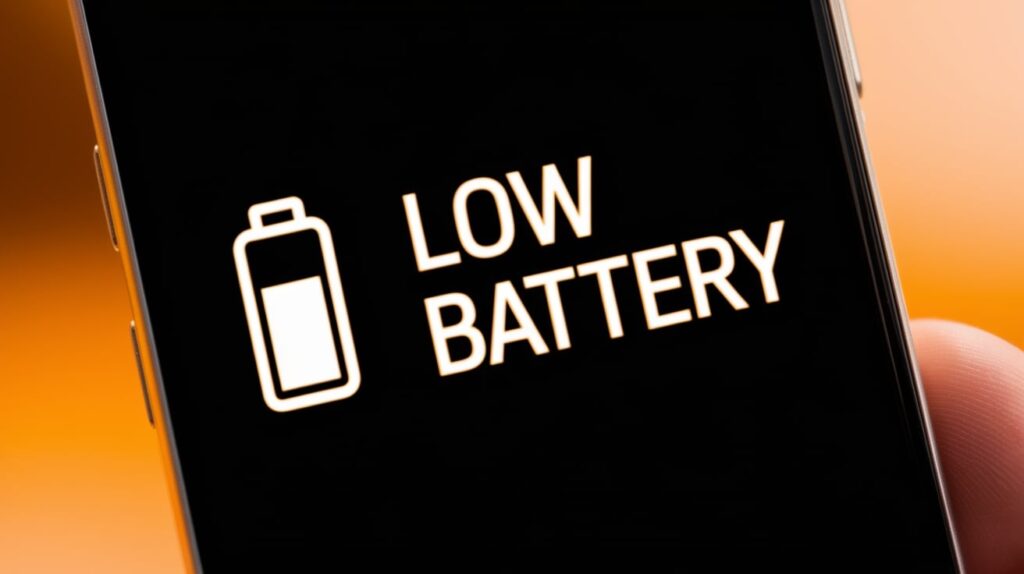
When the battery reaches a critical threshold, a clear “Low Battery” text warning will appear next to the battery icon. This indicates replacement will be needed soon.
- Tap on the AirTag name for more detailed information

For additional details, tap directly on the AirTag’s name at the top of the screen. This expands the information panel with more options and status indicators.
- The battery status appears under the AirTag’s name
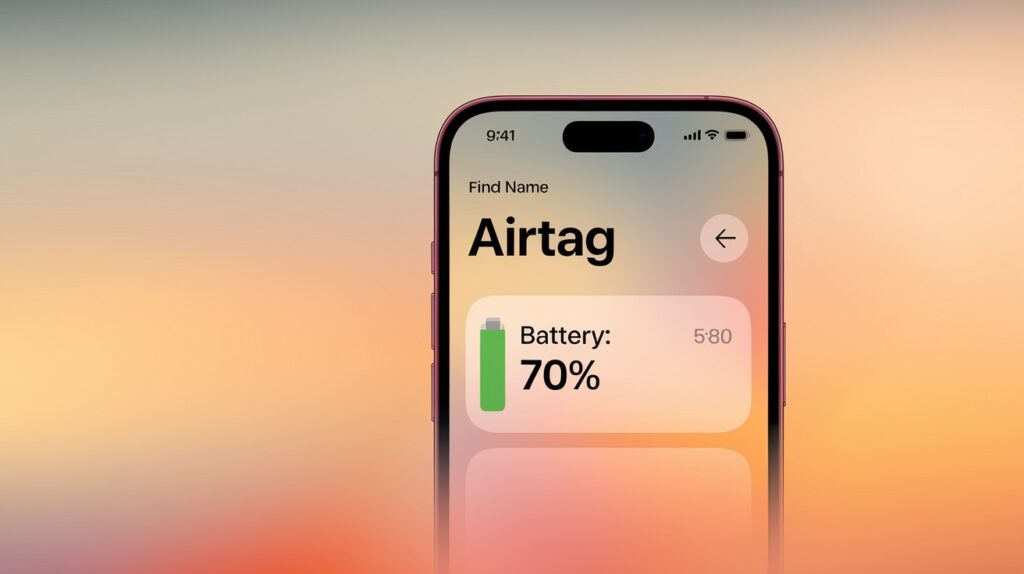
In this expanded view, you’ll see more detailed battery information. The status is displayed prominently, making it easy to assess if replacement is needed.
- To check multiple AirTags, return to the Items list and repeat
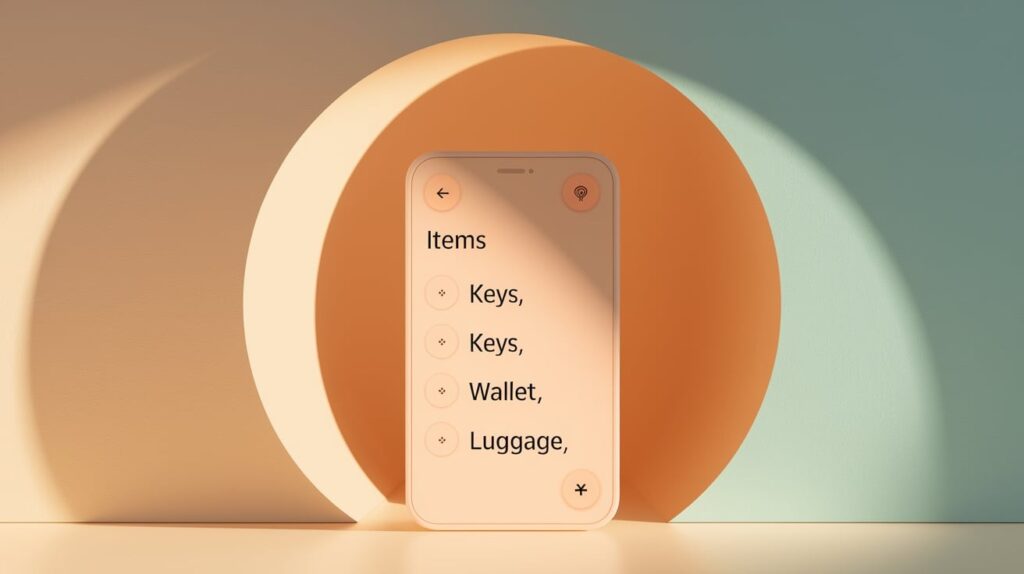
To check another AirTag, tap the back arrow in the upper left corner to return to your Items list. Then simply select another AirTag to view its battery status.
- For additional details, tap the “i” icon next to your AirTag
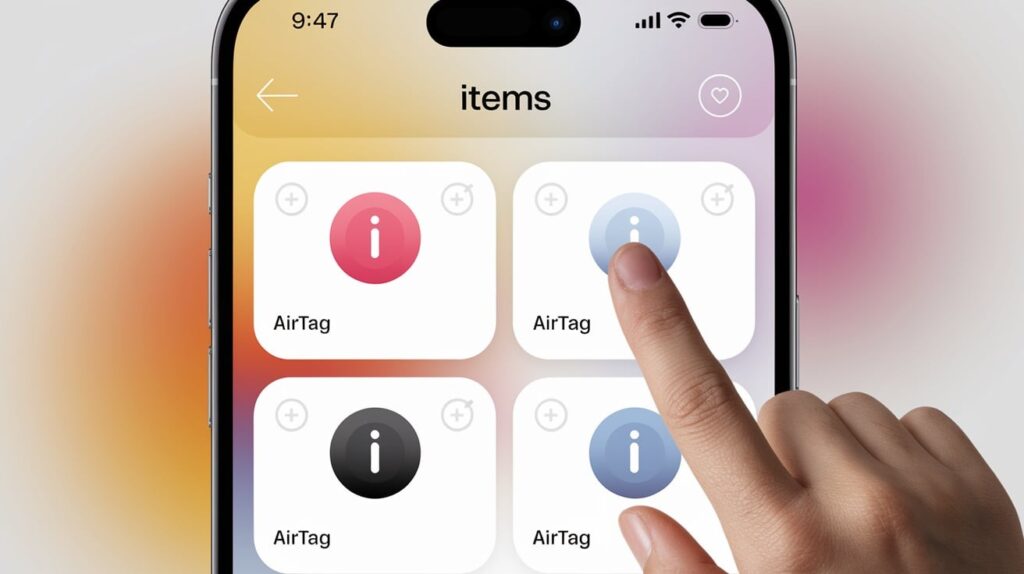
For even more information, look for the small “i” icon (information symbol) next to your AirTag. Tapping this provides access to all settings and status details.
- Battery information is shown in the item details screen

In this detailed view, you’ll see comprehensive information about your AirTag. The battery status is displayed along with other important tracking details.
Understanding Battery Level Indicators
Apple doesn’t display an exact percentage for AirTag batteries. Instead, the system shows a simple battery icon that gives an approximate indication of remaining power.
The icon appears full when the battery has plenty of charge, and gradually empties as power decreases. When the battery reaches approximately 10% remaining capacity, the icon turns red, and you’ll receive a notification.
Signs Your AirTag Battery is Low
|
Warning Sign |
Explanation |
Action Needed |
|
Red battery icon |
Battery at critical level (≤10%) |
Replace the battery soon |
|
“Low Battery” notification |
iOS alert sent to your iPhone |
Purchase a replacement battery |
|
Inconsistent tracking |
Location updates become less reliable |
Replace immediately if tracking important items |
|
Weaker connection range |
The maximum effective distance decreases |
Move closer to the track items |
|
Sound alerts quieter |
Speaker volume may decrease |
May not be audible in noisy environments |
|
Delayed responses |
Longer lag when using Precision Finding |
Expect reduced responsiveness |
|
Find My app warnings |
Persistent alerts in the app interface |
Cannot be dismissed until the battery is replaced |
What Happens When the Battery Dies?
AirTag Functionality After Battery Depletion
When an AirTag’s battery completely runs out of power, the device stops functioning entirely. The Bluetooth transmitter can no longer broadcast signals, making it impossible for the Find My network to detect its location. The Ultra-Wideband chip also becomes inactive, disabling Precision Finding capabilities. The internal speaker will not respond to play sound commands, making it impossible to locate through audio cues. Essentially, the AirTag transforms into a non-functional accessory until the battery is replaced, as it lacks any backup power source or passive tracking capabilities.
Notifications and Alerts You Receive
As your AirTag’s battery approaches complete depletion, your iPhone will send several tiered notifications:
- The initial “Low Battery” notification appears when approximately 10% power remains
- Follow-up reminders if the battery continues to drain without replacement
- Final “Battery Critically Low” warning shortly before complete power loss
- A “Last Known Location” notification showing where the AirTag was last detected
- Once completely dead, a “Battery Depleted – AirTag Offline” message
Security Implications
A dead AirTag has several security considerations worth noting:
- Items attached to depleted AirTags are no longer protected by Find My tracking
- Theft deterrence benefits are completely lost once the battery dies
- A depleted AirTag cannot emit anti-stalking alerts, potentially creating privacy concerns
- Lost items become significantly harder to recover without active tracking
- The AirTag’s internal data remains intact despite power loss, meaning privacy settings and ownership information are preserved
AirTag Battery Life Compared to Competitors
|
Feature |
Apple AirTag |
Tile |
Chipolo |
|
Battery Type |
CR2032 coin cell |
CR2032 (Pro/Mate)<br>CR1632 (Slim)<br>Non-replaceable (Sticker) |
CR2032 (ONE/CARD)<br>Non-replaceable (Spot) |
|
Battery Life |
~12 months |
12 months (Pro/Mate)<br>3 years (Sticker)<br>3 years (Slim) |
12 months (ONE)<br>2 years (CARD)<br>2 years (Spot) |
|
Low Battery Warning |
Notification at ~10% remaining Visual indicator in the Find My app |
Notification at ~1 month remaining Visual indicator in Tile app |
Notification at ~2 weeks remaining Visual indicator in Chipolo app |
|
Battery Replacement Process |
Press and twist the back cover tools required |
Press tab and slide cover (Pro/Mate) Not replaceable (Slim/Sticker) |
Press and open cover (ONE) Not replaceable (CARD/Spot) |
|
Replacement Difficulty |
Easy – twist motion |
Moderate – requires a fingernail or a tool |
Easy-press method |
|
Battery Cost Factor |
~$1-5 per battery Widely available |
~$1-5 per battery Widely available |
~$1-5 per battery Widely available |
|
Official Replacement Guide |
Available in the Find My app Visual instructions |
Available in the Tile app Video tutorial |
Available in the Chipolo app Visual instructions |
|
Environmental Impact |
Recyclable battery Take-back program |
Recyclable battery (Pro/Mate) Non-recyclable (Slim/Sticker) |
Recyclable battery (ONE) Non-recyclable (CARD/Spot) |
Are There Rechargeable Options for AirTags?
Exploring Third-Party Mods or Alternatives

Several third-party companies have created modified tracking solutions that incorporate rechargeable capabilities.
Products like the Eufy SmartTrack Card and Samsung SmartTag+ offer built-in rechargeable batteries with USB-C or wireless charging options.
Other manufacturers have developed AirTag-compatible cases with integrated lithium-ion batteries that power the AirTag through contact points.
These alternatives typically cost more upfront but can save money over time. Most rechargeable trackers offer similar functionality to AirTags, though they might lack some Apple-specific features like seamless Find My integration or the full precision of Apple’s Ultra-Wideband implementation.
Apple’s Stance on Rechargeability
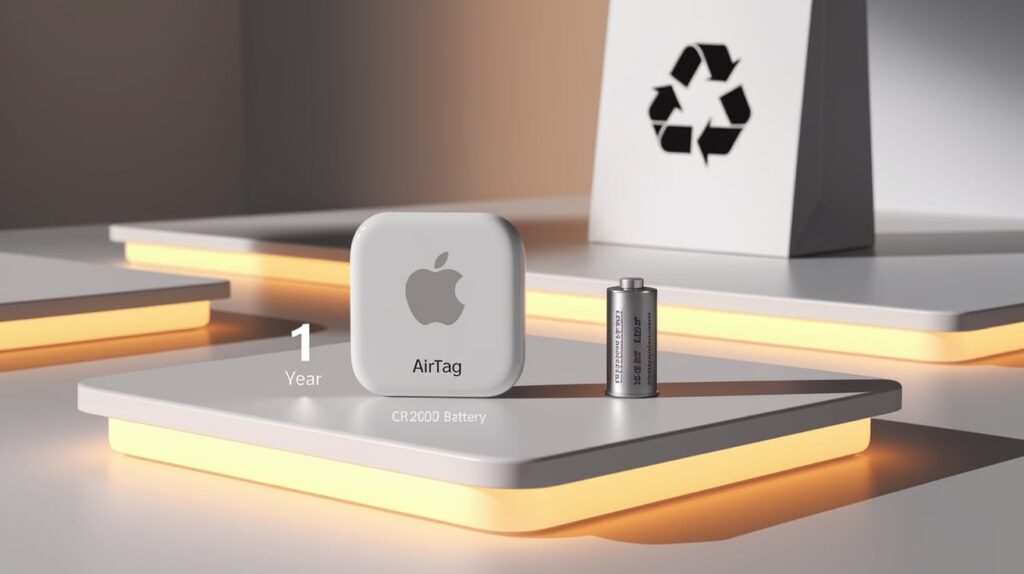
Apple has deliberately chosen non-rechargeable batteries for AirTags, prioritizing size, simplicity, and longevity.
The company maintains that a yearly battery replacement represents an optimal balance between user convenience and environmental considerations.
In official documentation, Apple emphasizes the efficiency of its design, noting that rechargeable options would likely require more frequent charging than the current annual replacement schedule.
When questioned about potential future rechargeable versions, Apple has remained noncommittal, suggesting their current approach aligns with their product philosophy.
They do, however, encourage responsible disposal of used batteries through their recycling program and retail stores.
Pros and Cons of DIY Solutions
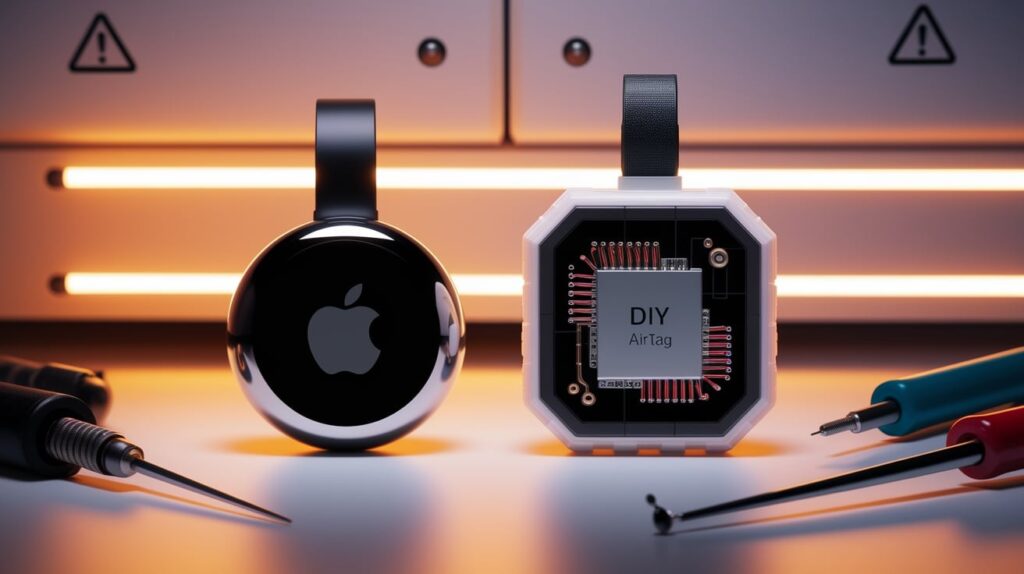
Some tech enthusiasts have attempted DIY rechargeable modifications for AirTags, typically involving small lithium-polymer batteries and custom charging circuits fitted into modified cases.
These homemade solutions require technical skills, including soldering and basic electronics knowledge. The advantages include potential cost savings over time and reduced battery waste.
However, significant drawbacks exist: modifications void warranties, may damage the AirTag’s water resistance, and could potentially create safety hazards if improperly implemented.
The physical constraints of the AirTag’s small form factor make proper heat management challenging, and custom solutions typically result in bulkier devices that might not fit existing accessories or cases.
Conclusion
Apple’s AirTag offers reliable tracking with its year-long battery performance, striking a good balance between convenience and functionality.
The standard CR2032 battery provides consistent power that meets most users’ needs, though actual life varies based on usage patterns and environmental factors.
When your AirTag’s power runs low, replacing the battery is straightforward and affordable. Compared to competitors, AirTags maintain competitive battery longevity while featuring an easy replacement process.
While rechargeable options remain limited to third-party alternatives or DIY modifications, the simplicity of annual battery replacement works well for most users.
Apple’s design choice prioritizes form factor and reliability over rechargeability.
By understanding what affects your AirTag’s power consumption and monitoring its status through the Find My app, you can ensure your valuable items remain trackable without interruption.
Frequently Asked Questions
Can I use any CR2032 battery in my AirTag?
Yes, any standard CR2032 battery works, though high-quality brands may provide more consistent performance.
Will my AirTag notify me before the battery dies?
Yes, your iPhone sends notifications when the battery reaches approximately 10% remaining power.
Does using Precision Finding drain the battery faster?
Yes, frequent use of Precision Finding will reduce battery life due to increased Ultra-Wideband chip activity.




